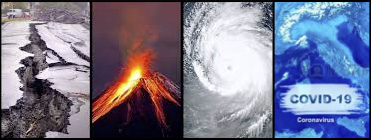
Summary
Everyone is at risk of exposure to natural and social hazards - either physically or socio-economically. However, some individuals, families and communities seem more vulnerable and experience greater losses than others. Successful hazard risk reduction interventions require understanding not only about hazard events themselves but also about how to reduce the exposure and vulnerability of people and assets against these hazardous events.
NaSH is an intradisciplinary group from the Computer Applications in Science and Engineering Department that pushes the boundaries of science and technology for the early identification and forecast of both natural and social hazards, as well as their interdependence and interplay with environmental and societal factors. NaSH also develops methodologies to reduce vulnerability and exposure; while increasing resilience of communities, institutions and businesses.
- Pre-event -> risk-reduction measures
- Intra-event -> real-time response
- Post-event -> quick and better recovery
Objectives
- Developing risk-assessment technologies providing access to scalable, real-time tools to assess risks to natural catastrophes (e.g. earthquakes, volcanos, flood, wildfires) or slow-onset disasters (e.g. food insecurity, extreme weather)
- Develop simulations on human mobility and behavior against the backdrop of natural and social hazards
- Resilience monitoring indexes to evaluate the resiliency of communities with respect to a predefined set of risk.

